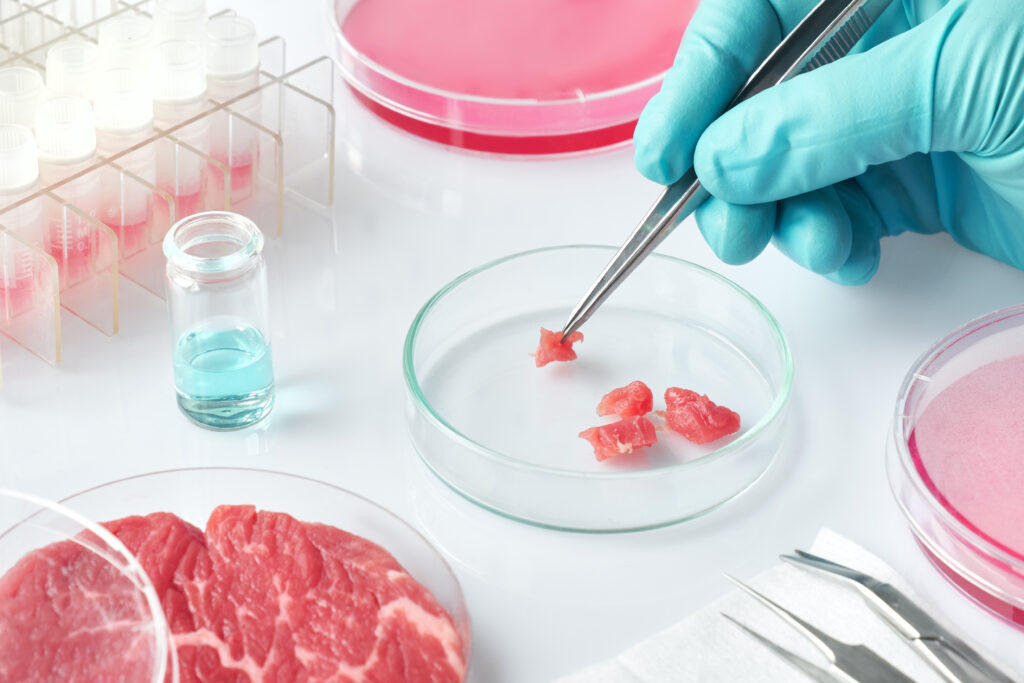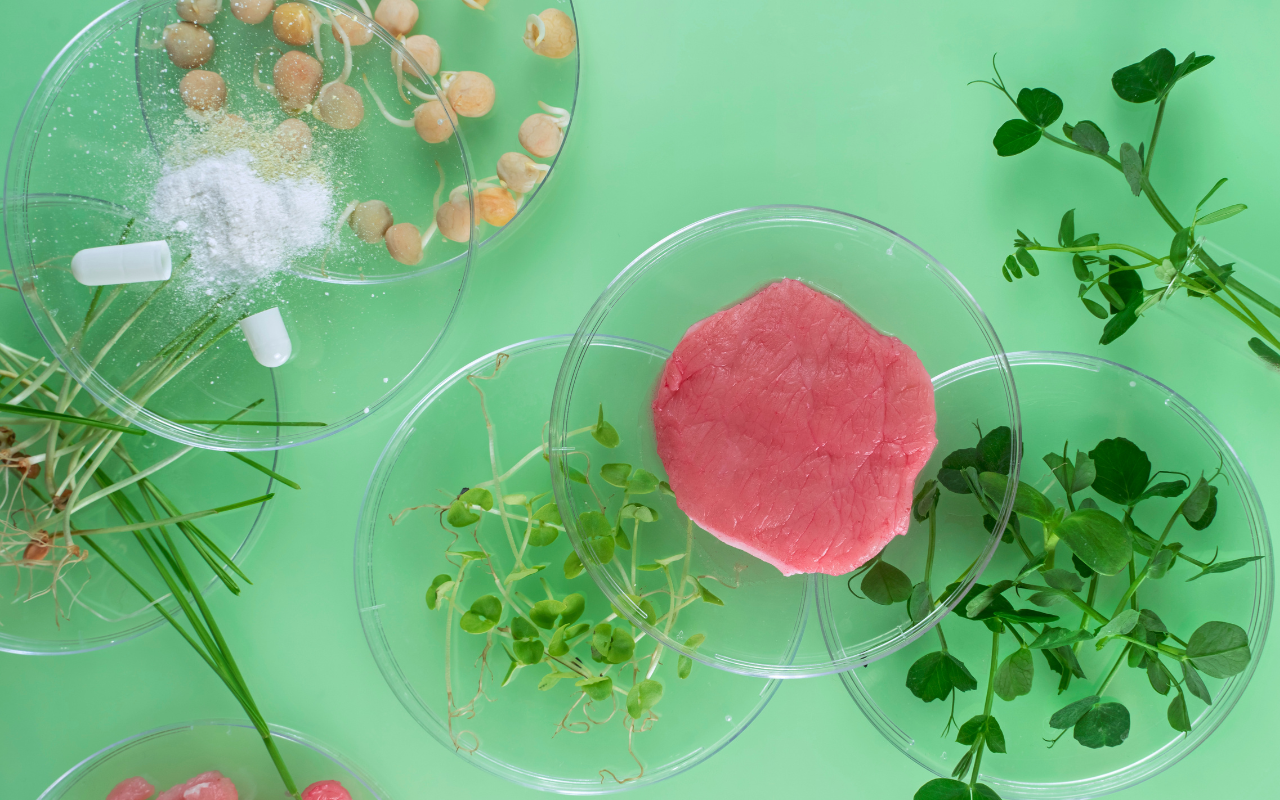A growing global population and an ever-increasing demand for food means humanity needs to think of new ways of keeping us healthy.
Food production may need to increase by up to 70% to keep up with the world’s population, according to a food and nutrition expert.
“Humanity will need to rethink and innovate our current food system, including agricultural production, to keep up with the number of people on the planet,” said Professor Johannes le Coutre, a professor of food and health at the University of New South Wales School of Chemical Engineering.
Professor le Coutre sounded the warning bell in a Medical Journal of Australia podcast, published today.
Future of protein
Global protein consumption rose by 40% between 2000 and 2018, with over 50% of this increase being driven by Asia (here).
One of the key challenges facing humanity’s food system is the demand for meat, which has promoted the development of intensive farming techniques in emerging economies, such as Asia, to meet the demand (here).
This is one reason behind the global research and development efforts to design viable scenarios for large-scale production of cell-based meat, Professor le Coutre said.
Cell-based meat is produced using cell culture technology, where meat is produced from animal cells using a combination of biotechnology, tissue engineering, molecular biology, and synthetic processes (here).

“The idea behind [laboratory-grown] meat actually goes back to former British Prime Minister Winston Churchill in the 1930s, who talked about the absurdity of breeding an animal if you are only just going to eat certain parts of it,” Professor le Coutre said.
“About 15 years ago, researchers in The Netherlands in laboratories started to develop [laboratory] grown meat.
“Here’s how it works: you take a little biopsy from a live animal, grow it in a laboratory, firstly in a Petri dish and then later in flasks.
“It will grow and grow until it becomes edible.”
This may be an affordable and nutritious way of feeding the world’s population in the future as long as consumers are convinced that it is safe, he said.
“Only the future will tell if this will turn out to be a gimmick or if it will become a mass-produced reality; consumer confidence and trust are really key here.”
So far, Food Standards Australia New Zealand (FSANZ), the Australian food regulator, has not approved or set requirements for “cell-based meat” in the Food Standards Code.
FSANZ said it is aware that food regulators in the United States are establishing a framework for regulating cell-based meat and poultry and the recent US Department of Agriculture approval for selling cell-cultured meat pays tribute to this development.
“The aim of the [US] framework is to provide a transparent path to market for cell-based meat alternatives,” the FSANZ website said.
“In the European Union, it is likely cell based meat will fall under the EU Novel Food Regulations, whilst Israel, China, Japan, the Netherlands and Singapore appear to be moving quickly to ensure a clear path to market for this method of meat production.”
“True cost” of food and food insecurity
Many companies and people in the world are yet to realise the “true cost” of what they are consuming, Professor le Coutre said.
“We need to look at the true cost of food, which is often much higher than what we are paying in the supermarkets,” he said.
“Researchers are already calculating the true cost of water (here and here), but we need to be looking at food too.”
Australia is in a fortunate position to ensure its food security, compared with some European countries, Professor le Coutre said.
“Australia is a wealthy country and it is blessed with a lot of agricultural land,” he said.
“We also have a strong export sector, but even in Australia we are feeling the economic and trade impacts of the war in Ukraine (here).
“As issues relating to climate change take hold, food production may become more challenging.”
The coronavirus disease 2019 (COVID-19) pandemic also demonstrated the frailty of our global health care and food systems.
The Australian Government Department of Agriculture published food security information on its website in 2020, at the height of the COVID-19 pandemic, when some items were in short supply in supermarkets.
“Australia is one of the most food secure countries in the world, for several reasons,” the Department said.
“Australia produces much more food than it consumes, exporting around 70% of agricultural production.”
At a population level, a 2020 report estimated that, in Australia, 4–13% of the general population and 22–32% of the Indigenous population are food insecure (here).
The impact of “Brexit” in the United Kingdom has also demonstrated the complexities of the global nature of trade and its dependence on other countries for its food security.
Genetically modified food
Genetically modified organisms (GMO) are any animal, plant or microbe whose DNA has been altered using genetic engineering techniques (here).
The Office of the Gene Technology Regulator has approved only four genetically modified (GM) crops for cultivation: cotton, canola, Indian mustard, and safflower.
The sale of fresh GM foods such as fruit or vegetables, meat or fish is currently banned in Australia and New Zealand.
Professor le Coutre said he expected there to be a role for them in Australia’s future food system.
The public perception of GMO foods has previously been negative, he said, which he believes is a result of alarmist coverage by the media and a lack of understanding of food science.
“It is my belief that GMO foods in the past mainly have been developed in order to bring benefits to the food industry or to farmers, without explaining the cost to consumers, so consumers quite frankly do not clearly see the benefit of GMO,” he said.
“The idea of altering crops to require less water or better resist diseases or pests is not a new one, but it will play an important role if we want our future crops to be more resilient to climate change,” he said.
Listen to the Medical Journal of Australia podcast with Professor Johannes le Coutre.
Subscribe to the free InSight+ weekly newsletter here. It is available to all readers, not just registered medical practitioners.

 more_vert
more_vert
How does creating something new reduce waste?
Why not start making new food products using all parts of the animal that is slaughtered?
Some nations are starving while others are overweight and inventing drugs to help them lose weight without eating less.
These don’t seem to be issues that start or resolve in a science lab.
The premise of this article is sensible, but then goes down the rabbit hole of chasing the latest ‘fad’. The world needs food and increasing amounts of it. Cell based meats is going to be a niche product at a price point that most consumers (including the poorest in the world) are not going to be able to afford. How about dedicating an article to alleviating hunger through practical and collaborative approaches with traditional agricultural sectors that actually feed the world?